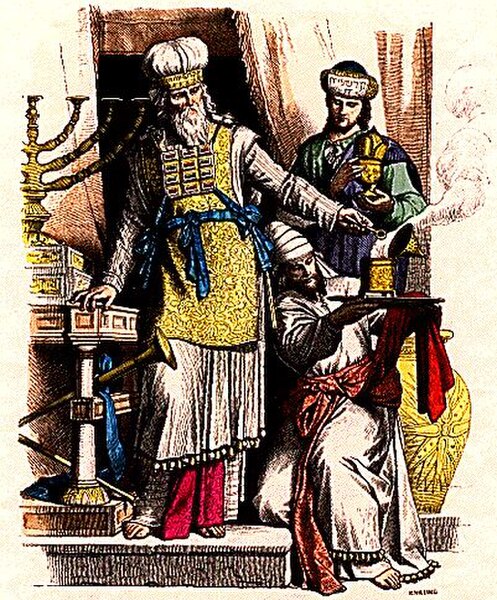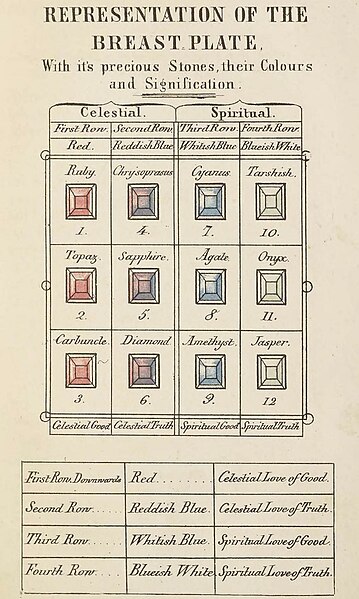In the Hebrew Bible, the Urim and the Thummim are elements of the hoshen, the breastplate worn by the High Priest attached to the ephod, a type of apron or garment. The pair are used frequently in the old testament, in Exodus 28:30 through God's instruction to Aaron on how to adorn his breastplate worn in the holy place; in 1 Samuel 14:41 by King Saul to determine who was at fault for breaking the army's fast; and Ezra 2 to determine whether those who claimed to be the descendants of the priests of Israel were truly of that class. The Lights and Perfection are sometimes connected by scholars with cleromancy, although it is equally likely no casting was physically done, and the participants of Lights and Perfection waited for a sign to answer a question or reveal the will of God. Modern scholars have noted the meaning of Lights and Perfection as being epithets for Jesus Christ, both the Light and Truth (perfection). Urim and Thummim is the motto of Yale University; the seal of the school shows both the Hebrew and Latin words.

"God speaks through the Urim and Thummim," 1705 engraving by Jan Luyken. The breastplate projects the word ברקת (barakat, "emerald").
The priestly breastplate or breastpiece of judgment was a sacred breastplate worn by the High Priest of the Israelites, according to the Book of Exodus. In the biblical account, the breastplate is termed the breastplate of judgment, because the Urim and Thummim were placed upon it. These elements of the breastplate are said in the Exodus verse to carry the judgement of God concerning the Israelites at all times.
Ceramic replica of the High Priest's breastplate
Illustration of priestly breastplate
Artist's conception of Jewish high priest wearing a hoshen in ancient Judah
Interpretation of the hoshen by Robert Hindmarsh





